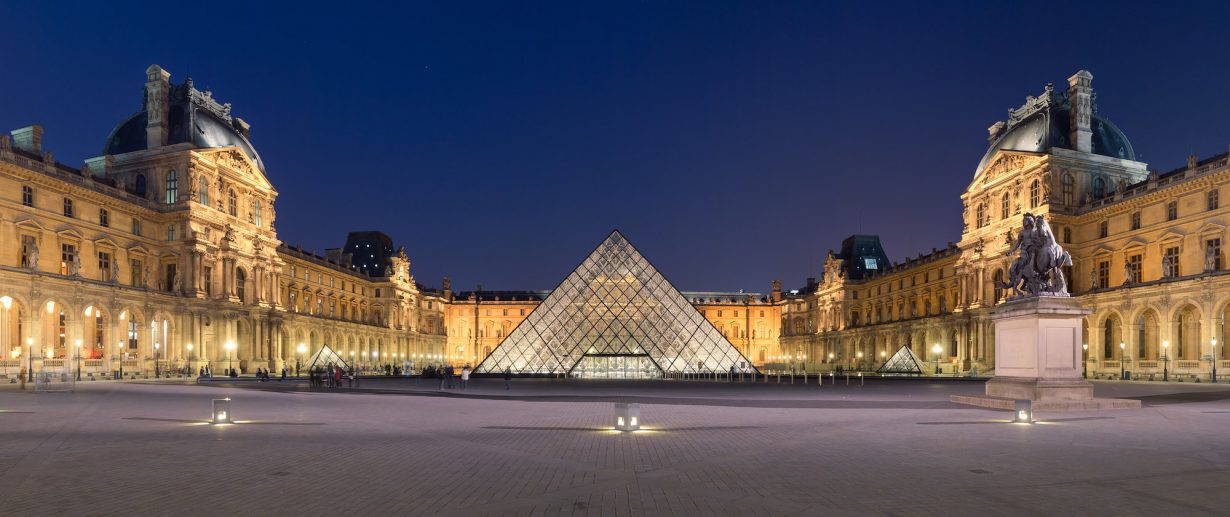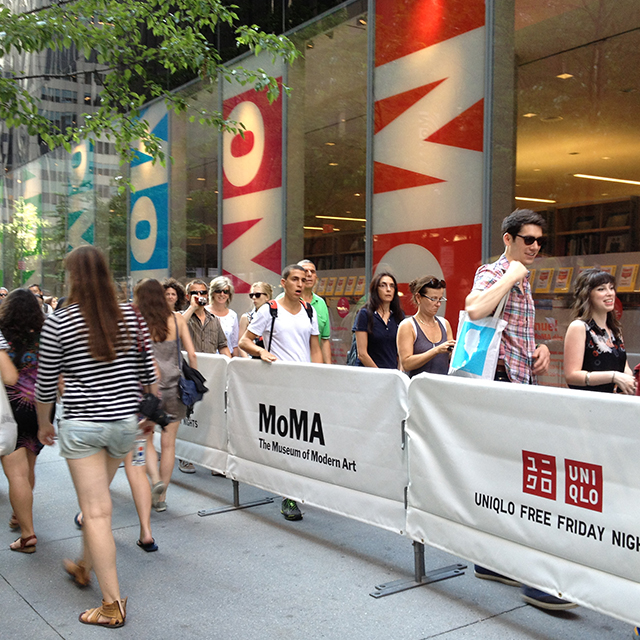As admission fees continue to increase, novelist Keiran Goddard considers the rising cost of culture and whether a different museum is possible
Seventeen years ago, I was involved in an art heist at the Louvre.
A man in a beret pressured me into giving him €40 for what he assured me would be a ‘ravishing’ portrait. Except it wasn’t ravishing. And it was barely a portrait. Or if it was a portrait, it wasn’t a portrait of me. It was just a generic caricature of a man with a beard. This was my first time in Paris and my naive meekness had cost me two whole days of travel budget.
In retrospect I should have immediately thrown the thing away, tried to claw back a little dignity. But I didn’t. I dutifully carried the portrait of the generic man around the city with me all day, unrolling it occasionally to see if it might have magically become less shit in the hours since I last looked. Later that night, I explained to my friend Will what had happened. Will – a far more cultured man than me, studying in Paris and speaking good enough French to not get fleeced by men in berets – responded exactly as he should have done. He ruthlessly mocked me.

Will hung the ravishing portrait of the bearded man in his studio. For months afterwards, I would get notifications on Facebook that I had been tagged in a picture, only to discover that someone had visited Will in Paris, taken a photo in his studio and saw fit to tag the drawing on the wall as me. Every time this happened, I laughed that special kind of laugh. The I’m-still-a-bit-sad-about-losing-€40 laugh.
At this point, you might reasonably be asking what this tale of humiliation has to do with recent news that some high-profile museums, including the Guggenheim, the Met and the Whitney in New York and SF MoMA in San Francisco, are hiking their admissions prices. Fair enough. But it sprung to mind for a reason. Because somewhere buried in my outrage back then was a sense that the man in the beret had done more than simply rip me off. He had transgressed, broken some sort of unwritten law; that we do not mention, let alone brazenly enact, the relationship of art and profit. Art and profit have always coexisted? Erm, fine, I guess. Art and profit are more often than not symbiotic? Less fine, but let’s quietly move along. Art exists primarily in the service of profit? Well, that doesn’t really feel fine at all, so let’s not mention that.
I sense a similar sentiment in some of the reactions to the recent price rises. Sure, the hikes are a pragmatic response to rising costs and falling visitor numbers since the COVID-19 pandemic, a downstream effect of a broader set of socioeconomic headwinds. But something about it just doesn’t feel right. Deep down, we still want to cling to the idea of these institutions as being insulated, or set apart from, the brutalising logic of the market. Despite overwhelming evidence to the contrary, we think of museums as that most precious of things – third spaces: neither work nor home, communal spaces, spaces that privilege engagement and reflection over consumption and toil.
That’s the type of sentimental thinking that leaves you €40 lighter. Because, in retrospect, of course the man in the beret ripped me off, he was always going to. His process had little to do with art, it just happened near art, using proximity to grant him licence to profit, to lure the willing and the romantic into suspending their disbelief long enough to hand over their cash. You can see where this is going.
In honour of the man in the beret, here is a hasty and incomplete outline. These price rises are happening in a context in which art and its institutions end up routinely functioning as engines for tax avoidance, reputation laundering on an individual and institutional level, market manipulation, labour rights violations and colonial theft. Even at an experiential level – if we are honest with ourselves and strip away the patina of cultural cache that still surrounds the act – going to some of these museums is pretty grim. Architectural vanity projects boasting luxury brand ‘collaborations’ and the chance to cop a limited edition tote bag. And that’s before we even get into the murkier questions of ideology: the role these institutions play in owning and shaping specific histories at the expense of others, in centralising prestige and power, in telling a partial story about culture that serves a narrow set of interests.

I realise that all sounds rather negative. It is. And for the avoidance of doubt, I really like museums and galleries. Because I really like to look at stuff. And they have lots of stuff to look at (even if they do hoard and hide most of it). My point about the price rises is a simple one. It’s the same point my friend Will made to me all those years ago: What exactly did you expect?
Besides, raising admission prices from $20 or $25 to $30, while unequivocally a bad thing, is a bad thing in the way that adding an extra drop of poison to a bucket of poison is bad. More of a bad thing is never a good thing, to state the blindingly obvious. But surely our horizons have to be more ambitious than simply keeping prices at a level that was already prohibitively expensive for the vast majority of people and proffering the occasional brand-sponsored afternoon in which admission is free and the queues stretch along the street. We need to have a vision of the museum that is more protected from, or at least exists in meaningful tension with, the market, one that is embedded in an entirely different set of communitarian, artistic and financial demands. And if we aren’t willing to do this, then we shouldn’t be surprised when institutions beholden to the existing orthodoxies unthinkingly and reliably reproduce them.
Such a vision doesn’t have to be drawn from scratch. We could begin by searching the mess of the present for more hopeful inscriptions of a possible future. British museums, for example – despite often being in hock to fossil fuel finance; elevating murderous politicians to their highest echelons; stocking their collections with the loot of empire; and having to offset state funding cuts with endless, low-risk blockbuster exhibitions (for which they often charge exorbitant ticket prices) – still have something going for them. Free access remains, and remains worth celebrating. It allows visitors to step outside of the role of the value-maximising consumer. For you, dear visitor, there is no cost benefit analysis other than that of your time and your attention. Go and look at the same painting every time. Enter, then decide the art is boring and you’d rather go to the pub. Sit in the building because it is quiet or temperate, because you need to be alone or because you need to be around people. It’s all fine. It all matters. And it is all possible because you don’t have to pay.

I’m not saying admission prices don’t matter, they do, and of course we should argue for them to be kept as low as possible. But to make that the primary terrain of struggle is to implicitly accept that museums and galleries can only ever be conceived of as varieties of what they already are; depressing cogs in the broader machinery of wealth acquisition, inequality and market fundamentalism. We’ve got to do better than that. Imagine instead, just for a second, museums that have less in common with gilded palaces and more in common with the best libraries; universally free to access and governed at every level by the communities they serve. (Note: I’m not suggesting that people be allowed to borrow priceless artworks, but I’m not not suggesting that either). And beyond that, imagine a future where museums and galleries are embedded in struggles that are geared towards human flourishing at scale, towards a world in which more and better art can be produced and where we all have more leisure time to spend appreciating it: shorter working hours, co-operative and collective ownership models, participatory budgeting, universal basic income and universal basic services, principles of collective risk, stewardship, inter-generational equity, voluntary association and subordination of capital power to an accountable and organised base.
It’s a pretty picture, right?
Ravishing, even.
And the good news?
You even get to keep your €40.
Keiran Goddard is a writer based in South London. His debut novel Hourglass was shortlisted for the Desmond Elliott Prize, and his latest novel I See Buildings Fall Like Lightning will be published in February 2024.
